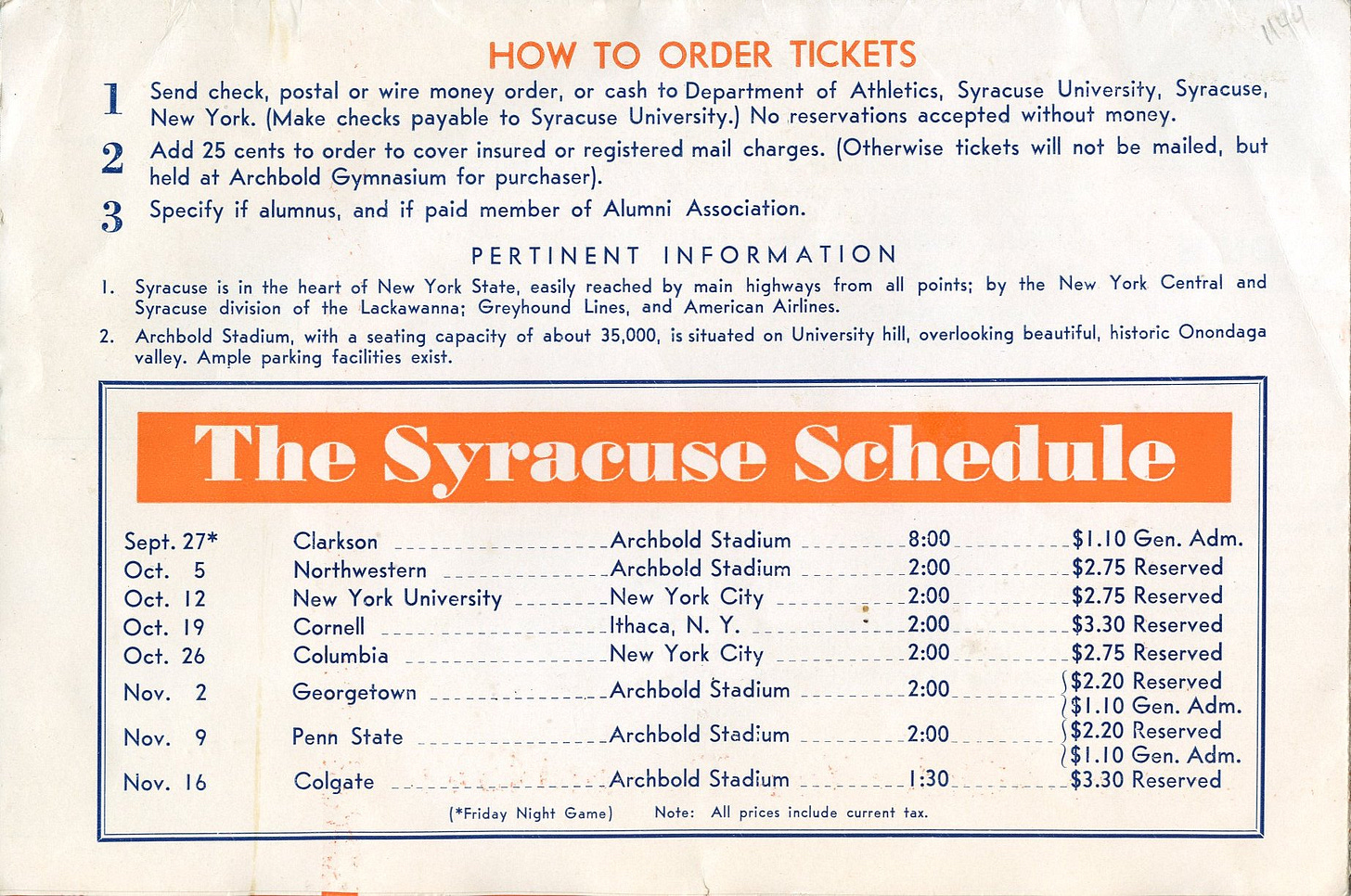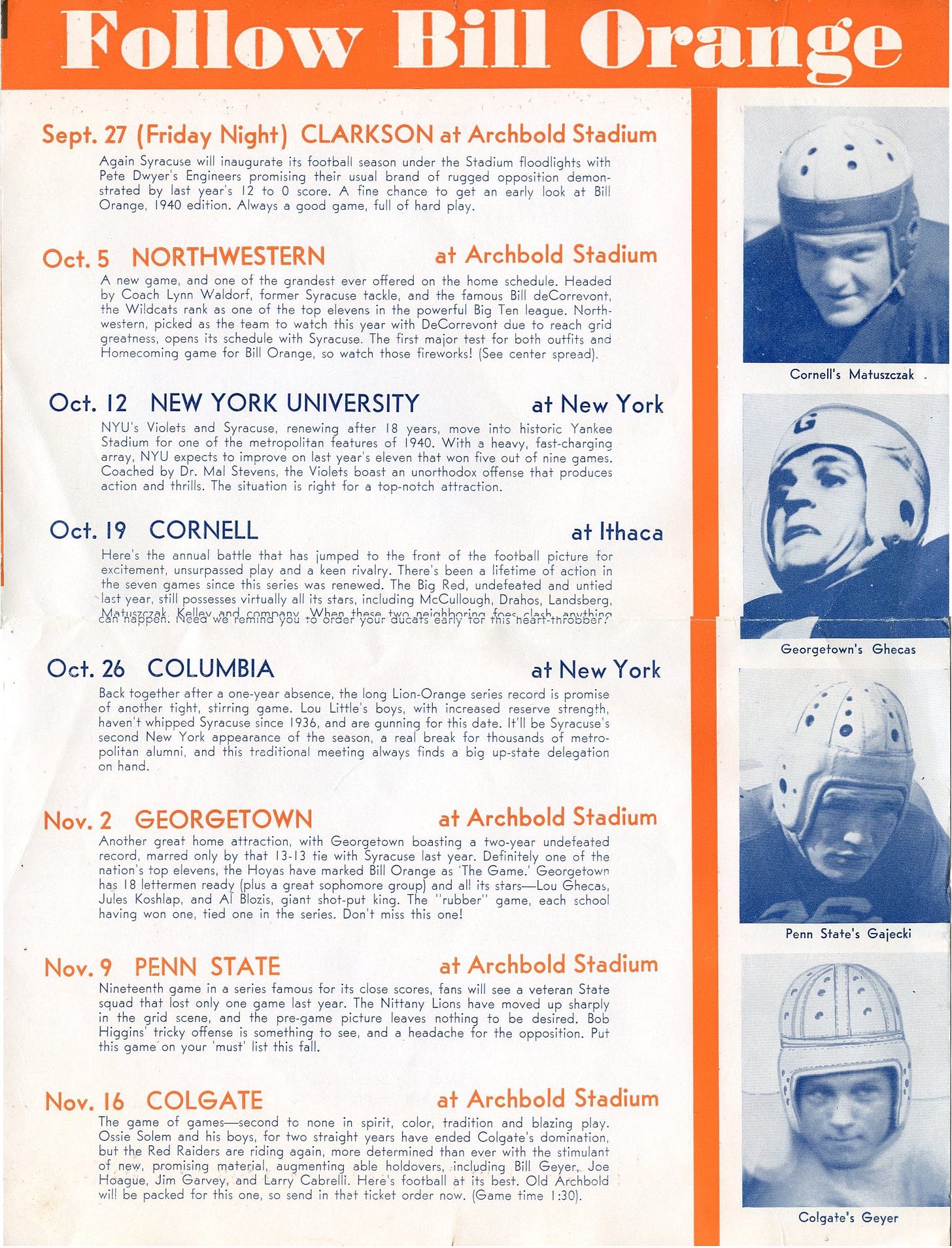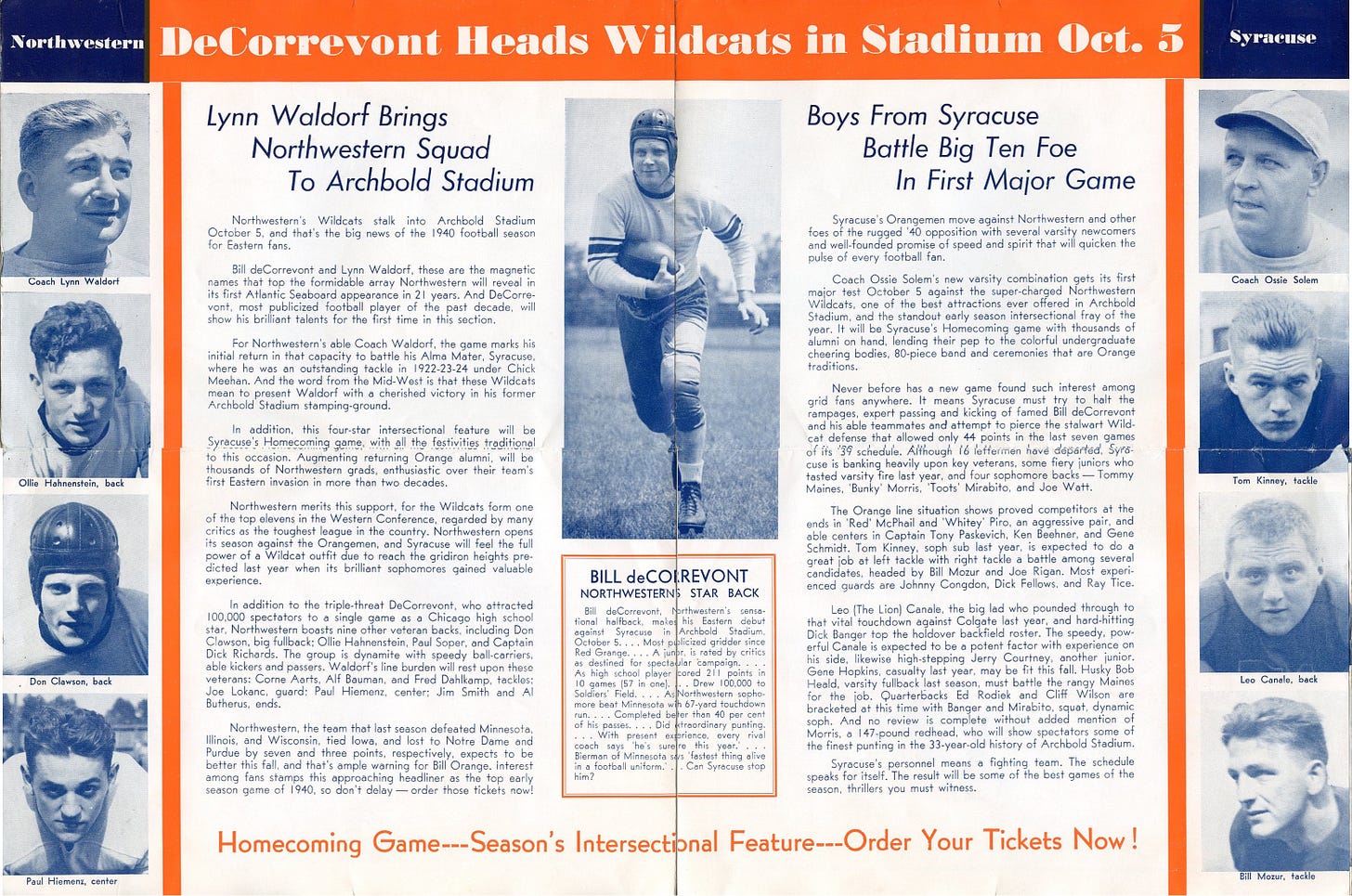Today's Tidbit... The First Plastic Helmets and 1940 Northwestern @ Syracuse
Those who designed, produced, and mailed the ticket brochure touting Syracuse's 1940 game with Northwestern had no idea the game would be a watershed moment in football equipment history. Syracuse opened their season the previous week, downing Clarkson 33-0, but the matchup was Northwestern's first, and that made all the difference.
The brochure promoted the Northwestern game and the rest of Syracuse's eight-game schedule, which included two home games, a three-game road loop, and three more home games, all played without leaving the state.
While the brochure profiled all eight games on the schedule, it highlighted the Northwestern game because it was Syracuse's only intersectional contest and came against the second-ever visit by a Big Ten team to Archbold Stadium. Illinois played there in 1909 and Michigan thrice during the Teens, but the Michigan games during the decade when Michigan left the conference.
Although the Central New York State crew looked forward to the game, it would have just been one more of the thousands of games played that year except for John Riddell. John Riddell was Evanston Township High School's football coach in the 1920s when he invented the interchangeable cleat for track and football shoes. The cleats were a hit, and after a few years, he left coaching to build a company that bore his name and produced the first plastic football helmet a decade later. Made of Tenite, a clear plastic developed by Eastman Kodak, the helmets were also transparent, so they painted the school colors on the inside of the shell before adding the suspension system and padding.
As it happens, Northwestern called Evanston home as well, so they received Riddell's first set of game-ready plastic helmets in time for their 1940 opener at Syracuse, with the result that the Syracuse-Northwestern game was the first in which football players wore plastic helmets.

The game was homecoming for Syracuse, and they proved to be welcoming hosts, opening the end zone doors for Northwestern six times and not expecting anything in return as the Wildcats ran away with a 40-0 win.
Few, if anyone, at the time recognized the importance of plastic helmets and their long-term impact on the game. They go unmentioned in the game reports, and the handful of newspapers that mentioned the plastic helmet innovation were those located near the participating schools or the manufacturers producing the helmets or their inputs. The coverage that appeared in print was clearly pulled directly from Riddell or Eastman Kodak press releases.
It is now apparent that plastic helmets and the suspension system developed by Riddell were substantial improvements over their leather predecessors and were a platform allowing for many subsequent advances. Some viewed the helmets as an experiment by a bunch of Northwestern eggheads - the newspaper wags later called them Martian helmets. Still, it was a watershed moment in the equipment game as plastic helmets and shoulder pads quickly became the norm after WWII.
For those interested in reading more about the leather-to-plastic transition, check out the following articles:
When West Point’s Football Helmets Went to War
Today's Tidbit... The Battle between Plastic and Leather Helmets
Today's Tidbit... Transitioning from Leather to Plastic
Looking for some vintage logo swag from one of 150+ schools? Grab it from Homefield and use the discount code FOOTBALLARCHAEOLOGY to save 10%.
Football Archaeology is reader-supported. Click here to buy one of my books or otherwise support the site.










great read timothy! that was great info on the Riddell helmets. great stuff! great info about 'Cuse as well! way back in the days of the leather helmets i alway love the origin of the logo on the helmet story. when fred gerhke with the cleveland rams painted the gold horns on the leather helmet himself. the rams becoming the 1st team to have a logo on the helmet
Gehrke painted the first logo on a pro helmet, but a few other stories show college teams had them as early as the 1920s.
https://www.footballarchaeology.com/p/footballs-first-helmet-logos
https://www.footballarchaeology.com/p/todays-tidbit-the-washington-huskies